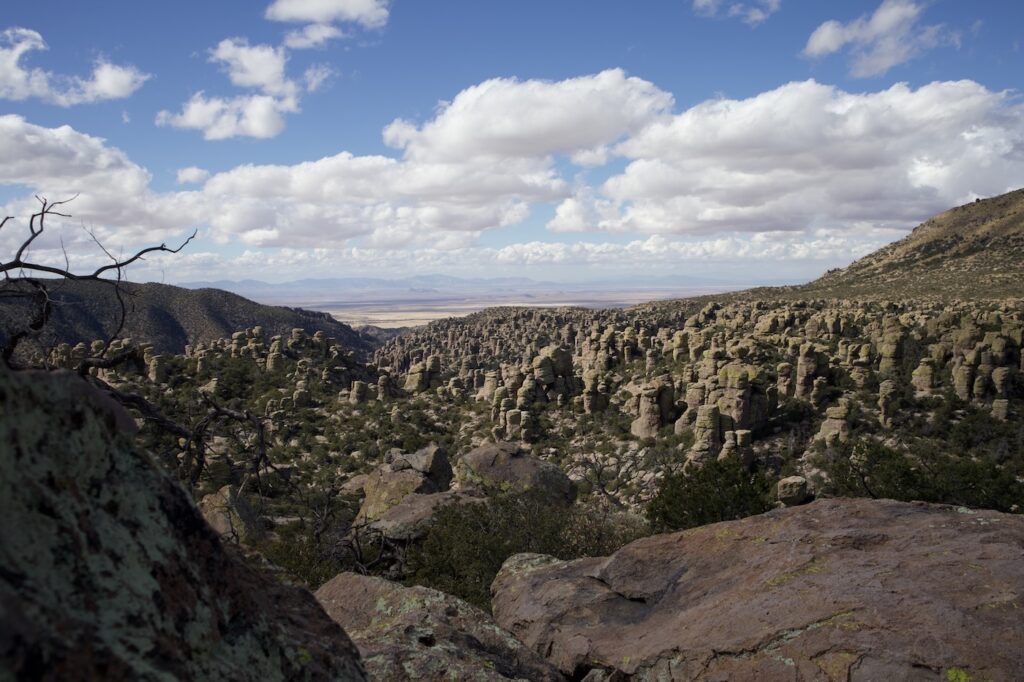High noon seemed like an appropriate time for our meet up. There wasn’t any gunplay planned, but my steed’s sudden oil leak did have me wondering if I’d make it through the trip. I’d noticed the dripping just a few days prior, too late to get it fixed before I left. Rather than miss out, I decided to press my luck. The warbling whistle of a Clint Eastwood movie soundtrack trailed off in the back of my mind as I headed south from Tucson.
I was on my way to join my friend Matt Bayer for a taste of the historical tour through southern Arizona’s Cochise County that he and Keith Dishong of Arizona Motorcycle Adventure Tours have been cooking up. Keith spent 15 years of his Border Patrol career stationed in Willcox, Arizona, during which time he had ample opportunities to discover and explore the many historical sites peppered across the mountains and valleys of these borderlands.
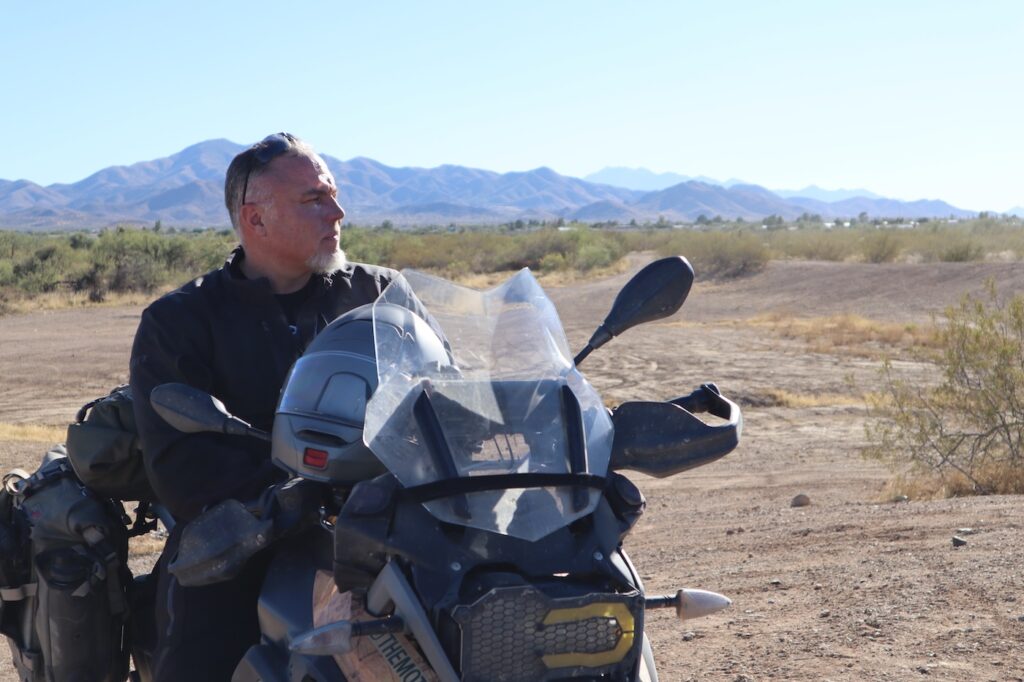
Matt’s no slouch himself when it comes to local history, so before we headed down to meet Keith in Willcox, Matt led me on an afternoon loop to check out a few places that most people pass by without ever noticing. Another rider, Jake, joined us on his new KTM 1290. We saw a decommissioned Titan II missile silo, and the hill where Kevin Costner chipped golf balls for the filming of Tin Cup. As we passed Huerfano Butte, Matt relayed the harrowing ordeal of Larcena Pennington, who once climbed it barefoot and bleeding after escaping from the Apache war party that kidnapped her. We traced our way down the scenic shelf road along Box Canyon, then Matt took us to an off-road playground to have a little fun in the dirt before we slabbed it east to meet up with the rest of our party. I noticed a few dark spots in the sandy soil under my engine, but the level in the glass was still good.
While I generally camp off the bike for my adventures, the appeal of a warm shower and a soft bed at the end of the day cannot be denied. Of course the riding itself is a lot more enjoyable too without the weight of all that extra gear! We checked into our hotel and then went to meet up with Keith and Scott at the Double S Steakhouse.
Keith’s excitement was contagious. He told stories about range wars, feuding families, and Wyatt Earp’s encore career as a crooked boxing judge. He described his approach to planning these rides, and he talked about piecing together old trails, stagecoach routes, and forgotten highways to get to our destinations by way of roads less traveled. Keith and Matt led a detailed critical analysis of the longstanding “Huckleberry” vs. “Huckle-bearer” debate, leading into a broader discussion about the 1993 film Tombstone and its far-reaching effects on everything from tourism to Gen X’s idea of what it means to be a man.
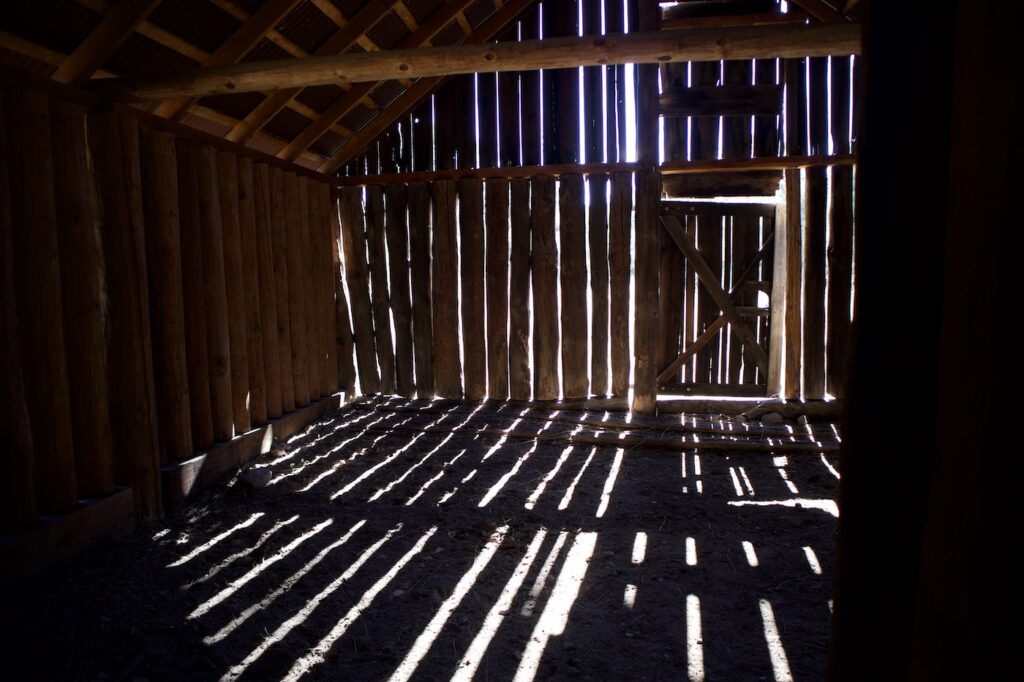
After fortifying ourselves with a hot hotel breakfast the next morning, we mounted up and made our way out to the Willcox Playa. If you’ve never experienced riding on a dry lakebed, you should really consider adding it to your list. This playa was used as a bombing and strafing range in the 1940s, and old targets and slugs can still be found littering the crusty surface.
From there we visited the Cochise Hotel, where Doc Holliday’s former girlfriend Big Nose Kate worked for a time some 12 years after Doc’s death. The current owner, Phil, was happy to show us the grounds as well as his collection of 1880s gaming tables and other period artifacts. We were walking in the literal footsteps of Cochise and Tom Jeffords, and it struck me how fitting it was to be taking in this tour from the saddle. Two wheels aren’t four legs, but it’s still a nice reminder of the travel challenges these men faced with only one horsepower on tap.
We followed the old Tucson-Cochise road to Dragoon Springs, where a short walk brought us up to the ruins of the old Butterfield stagecoach stop and some nearby Confederate graves. Matt filled us in on the site’s connection to some other notable events from the period, and Keith pointed out how this site represents a lot of what’s so special about a historical tour through Southern Arizona. There was no admission booth along the trail to get there. There were no fences, nothing was cordoned off. You can just walk right up and stand where these historic figures stood, you can place your hands on the same stones. The only thing protecting these places is their remoteness. For the most part, they are free and open to anyone with the wherewithal to get there.

Our group pulled into Tombstone just in time to hear shots ring out from the O.K. Corral. That famous gunfight gets reenacted daily, and it’s well worth the price of admission. Period actors and horse-drawn carriages make their way up and down the dusty streets, but despite the pretense Tombstone somehow manages to avoid the theme-park vibe of many tourist destinations. The town holds a kind of authentic charm that’s firmly rooted in real history, and I always enjoy passing through. We spent lunch delving into 140-year-old local politics, discussing the Earps and Clantons and McLaurys and speculating on whether the townsfolk might have sided with modern moviegoers or with that gang of Cowboys so villainized in the film.
After lunch we took two-track deep into Cochise Stronghold. Keith showed us metates and pictographs among the rocks, evidence of prehistory far more ancient than the 19th century conflicts our tour focused on. We rode east over Middlemarch Pass, dropping back down into the Sulphur Springs valley as we passed the adobe-walled ghost town of Pearce. Back in Willcox for the night, we filled our bellies with fried okra and smoked meats and swapped stories about motorcycling mistakes made and lessons learned. I made a mental note to check my oil level again, hoping to avoid collecting another such story firsthand.
With the sun still low the next day, our group took off down some sweepers through the farmland south of Willcox. The road snaked through the Sulphur Hills, then opened up to views of distant mountains still shrouded in morning mist. We gassed up in Sunizona, then followed dirt roads through working ranches until they led us to Johnny Ringo’s grave. Keith relayed the several competing theories as to how Ringo truly met his end, and even tipped his hand as to which he personally subscribes. Leaning up against the same old oak that Ringo did, I found myself speculating on the true character of these men that legend has so magnified. Actually going to these places has a way of humanizing the past.
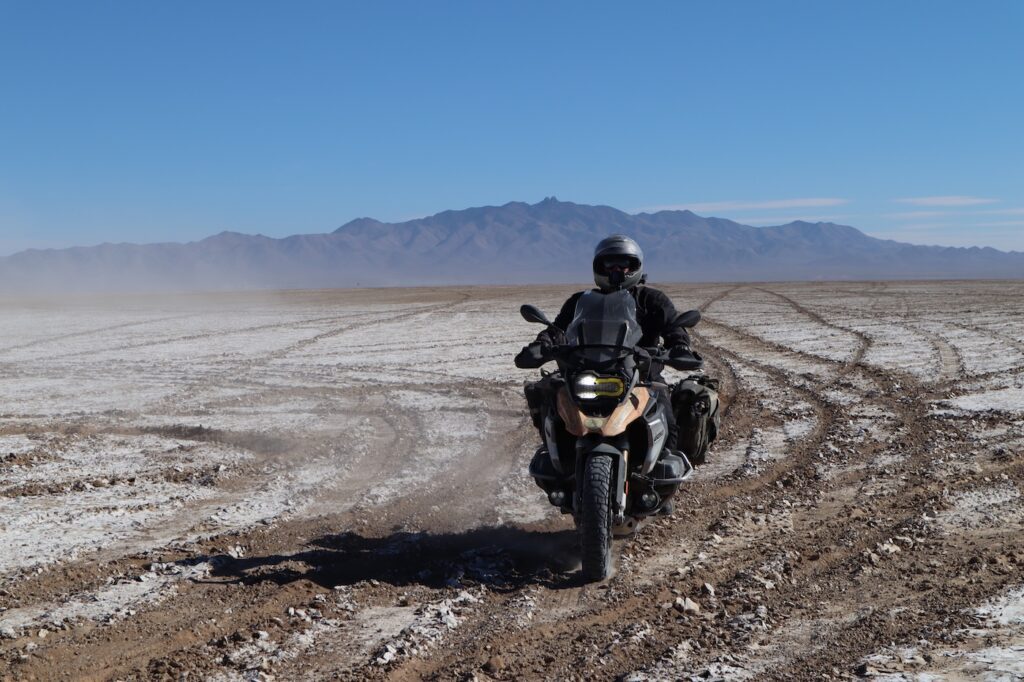
Next, we visited the old Rucker Schoolhouse, then made our way up the canyon of the same name to Camp Rucker. Keith explained how the theft of two mules from Camp Rucker led directly to the shootout at the O.K. Corral and I felt a shiver. More than just regurgitating facts from an interpretive sign, Keith’s insights as to the connections between these places gave them a whole new context. I’d ridden many of these same roads and trails before, but like most people I had blown right past a lot of these historic sites without fully appreciating them.
We crossed over the Chiricahuas and stopped to pay respects at the monument to Geronimo’s surrender. After briefly crossing the state line into the Land of Enchantment, we returned to Arizona and headed back up into the mountains for lunch at the cafe in Portal. I took the opportunity to pick Keith’s brain. The story of how he came to call his rider training outfit Crooked Raven is one that you ought to hear from him, but suffice to say it’s a knee-slapper! I was really more interested in learning the hows and whys of Keith’s method for finding cool stuff to see. Fortunately for me, he was happy to share. In the same way that a float trip with a good guide can change your approach to the river forever, a ride with a guide like Keith can change your approach to adventure touring.
The view in Portal is one of the most gorgeous in all of Arizona. It’s not necessarily what you might expect when you picture the desert, but the variety of landscapes is a huge part of what made me fall in love with this state to begin with. From the lush riparian corridor along Cottonwood Creek to the towering ponderosas of Pinery Canyon, the Chiricahuas hold incredible diversity both geographically and biologically. We visited John Hand’s grave and learned about his role in settling the area, then we crossed back over to the western slope and rode more fast sweepers back through the Dos Cabezas foothills toward Willcox. Jake split offto return home, and Tom met up with us to take his place. Over plates of Tampiqueña, we pooled our collective knowledge in an effort to piece together the fates of the five Earp brothers.
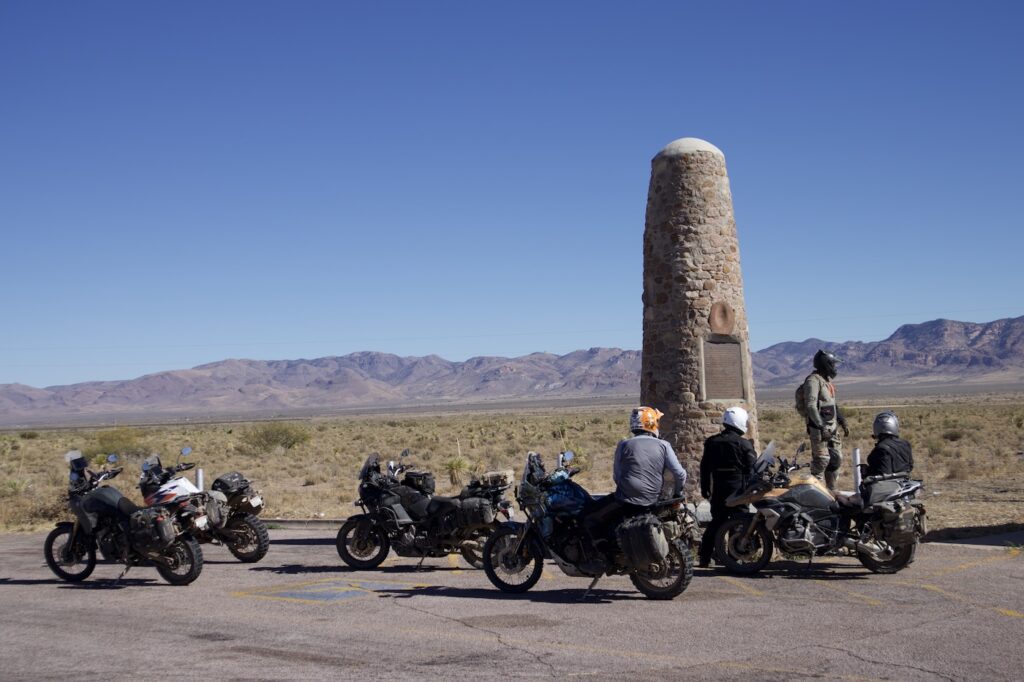
Our first stop on the final morning of the tour was Fort Bowie, the flashpoint of the Bascom Affair and the decades-long Apache Wars that followed. As Keith described the importance of the site, he drew connections to the various places we’d visited over the preceding days. The lines formed a web across whole valley, and reached across the mountain ranges on either side. Anyone can follow a GPS track, but this kind of context only comes from deep local knowledge.
We left the fort and crossed back over Apache Pass before dropping down to Chiricahua National Monument. We took the twisty paved road up through a tunnel of trees and their last hints of fall color, all the way to the summit at Massai Point. A forest of massive hoodoo rock formations stretched out between the point and the valley below, making for a stunningly unique vista.
On our way back down, we stopped to explore Faraway Ranch. Keith pointed out where soldiers stationed there had carved their names into the stones of the ranch house chimney, and I thought back to the pictographs we’d seen a couple of days before. There was even a metate repurposed into a paver for the walkway. I felt a certain camaraderie while walking through the old stables, and I remembered that poem about people being more alike than not.
True to form, Keith had picked some entertaining roads to take us back to civilization. I sighed with relief that my trusty steed had held together for four days of incredible riding. We shared one last meal as a group, then went our separate ways. I followed Matt back to Tucson, and the afternoon sun filtered through my dusty goggles giving the whole scene a sepia tone. I squinted my eyes against the glare, and for just a brief moment, I could have mistaken Matt’s Shoei for a Stetson as we rode off into the sunset.
